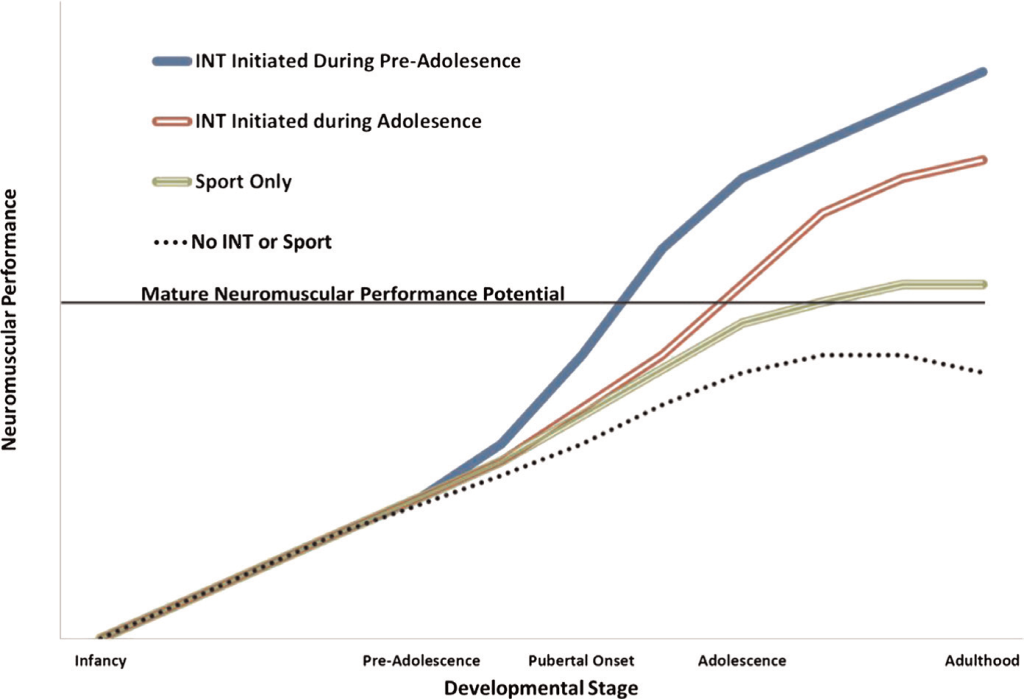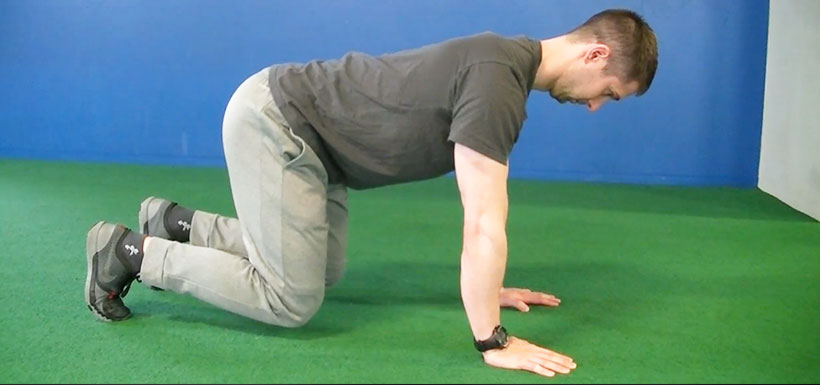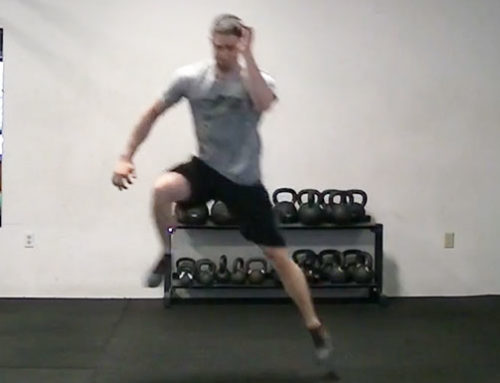Previously I’ve talked about methods for developing faster youth soccer players while training on the field. In short, we use three primary tools — running technique, plyometrics, and high-speed sprints — all of which are fantastic at improving an athlete’s speed. Off the field, we have a few more great methods that you can use to improve athleticism and reduce injuries.
I find that the most valuable off-field method to improve long-term athletic development is a well-constructed strength and conditioning training program.
Here are two strength and conditioning programs I’ve created for youth soccer players.
Athletic training exists as a continuum, with max speed training on one side, and max strength training on the other. Exercises like plyometrics, max speed sprints, and bodyweight work fall on the speed side. On the strength side, the best example is lifting something heavy.
Speed and strength work complement one another. I like to think of it as a delicious peanut butter and jelly sandwich: you need both in the right amount. If you slather on too much peanut butter and skimp on the jelly, suddenly all you have is a peanut butter sandwich. Add a little more peanut butter on top, and it is still just a peanut butter sandwich.
The point is that a peanut butter sandwich does not need more peanut butter to achieve its full potential. It needs jelly. In the same way, youth athletes who are working on speed all day do not need more speed training. What they can benefit from is strength training (our delicious jelly).
Strength and conditioning programs work well because youth athletes spend all their time on the max speed side of the continuum. Additional training should work to complement that instead of just adding to it.
Here are the steps a youth athlete would take during a strength training program.
- Learn to create and release tension
- Learn primary movement patterns and their application to sport
- Progressive performance development
Learn to create and release tension-
Running down a field, kicking a soccer ball, or jumping up for a header all involve creating and releasing tension. It is a basic skill all of us learn. Remember when you were a teenager and stood in front of the mirror flexing your biceps? That is an example of creating tension, flexing, and releasing it.
I use this same concept for our athletes, but in a more functional way. For example, this is a bear crawl isometric hold, were you learn to create tension through shoulders, core, and hips — a concept an athlete should master before adding complexity. The basic skill of creating and releasing tension is foundational to athletic performance.
Learn primary movements and their application to sport-
The eventual goal of strength training is to get stronger, but before that can happen you need to know how to move. Learning primary movements takes time and repetition. Think of it like learning to drive a car. Many of us start in a parking lot, quiet street, or — as I did — on a desolate country road in Kings Valley. All of us learn new skill better when we do not have distractions or added stress. Strength training is the same, and initially, you need to remove stress and distractions (weight) to get the results you want.
Younger athletes need more time with low intensity training (steps 1 & 2) as they learn to control their muscles. Repetition during this step will create faster connections between a young athlete’s muscles and brain. Once an athlete has solidified steps 1 and 2 then they can increase training intensity.
Progressive performance development-
At this point, an athlete is ready for what most people view as a strength training program. The athlete knows how to create and release tension, has a high level of movement efficiency without weight, and is now ready for added weight.
Now you have a teenage who can safely flex their biceps in the rear view mirror while driving around the city during rush hour. Impressive!
Unfortunately, many personal trainers try to start here.
When steps 1 and 2 are skipped, parents and coaches become hesitant of strength training because they fear the intensity may be too high or progressive. I’ve seen this on many occasions, and it is hard to watch. Young athletes are not little adults that recover quickly. They need a qualified personal trainer who can provide age-appropriate training. If they are not getting that, you need to find a new trainer before your current one does more harm than good for your athlete.
On the other hand, many parents and coaches hear about the process of low-intensity training and believe it is best to wait until their players are older and can train hard. The problem is the athlete still needs to go through steps 1 and 2, regardless of their age.
The idea that you can wait for an athlete to hit 15 or so and just start loading them up is wrong. In fact, a recent review showed that starting athletes during pre-adolescent (11-13 years old) leads to better motor control throughout their lives. Meaning, a 15-year-old who started strength training at 14 will be ready to train hard sooner than a peer without that experience. You can see this in the graph below, which shows the trajectory of neuromuscular performance based on when integrative neuromuscular training (INT) started.

If you are not sure where to start download one of our age-specific strength and conditioning programs I’ve created for youth soccer players; or contact me directly.
Regardless how a youth soccer athlete starts their strength training make sure it’s an age appropriate plan. The eventual goal is to get stronger, faster and more resilient but they need to know a few things before heavy weight’s are part of it.







